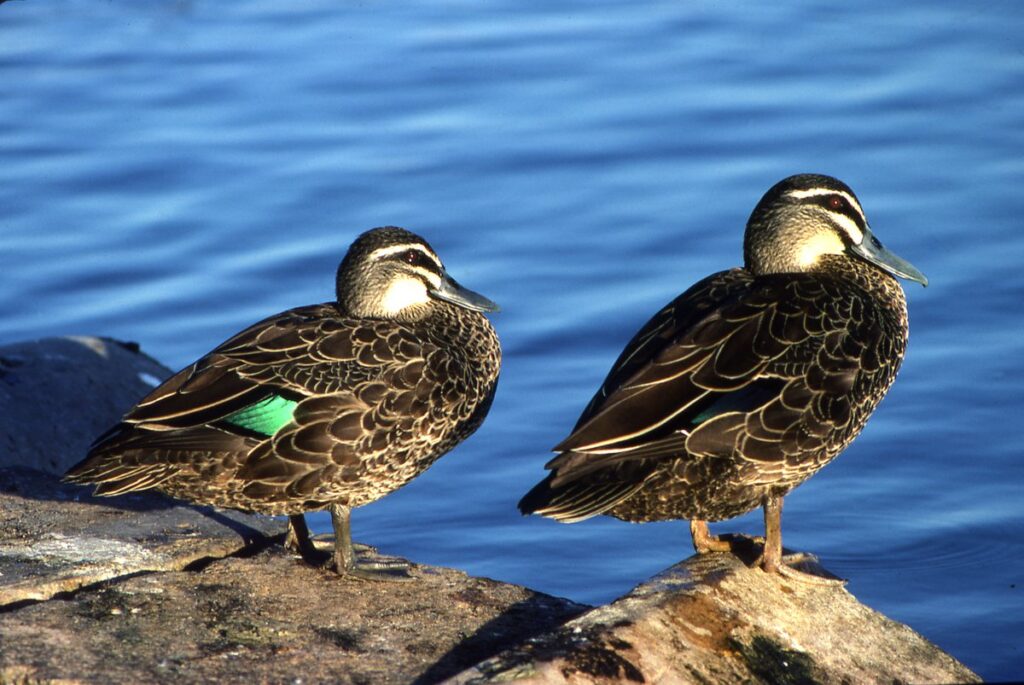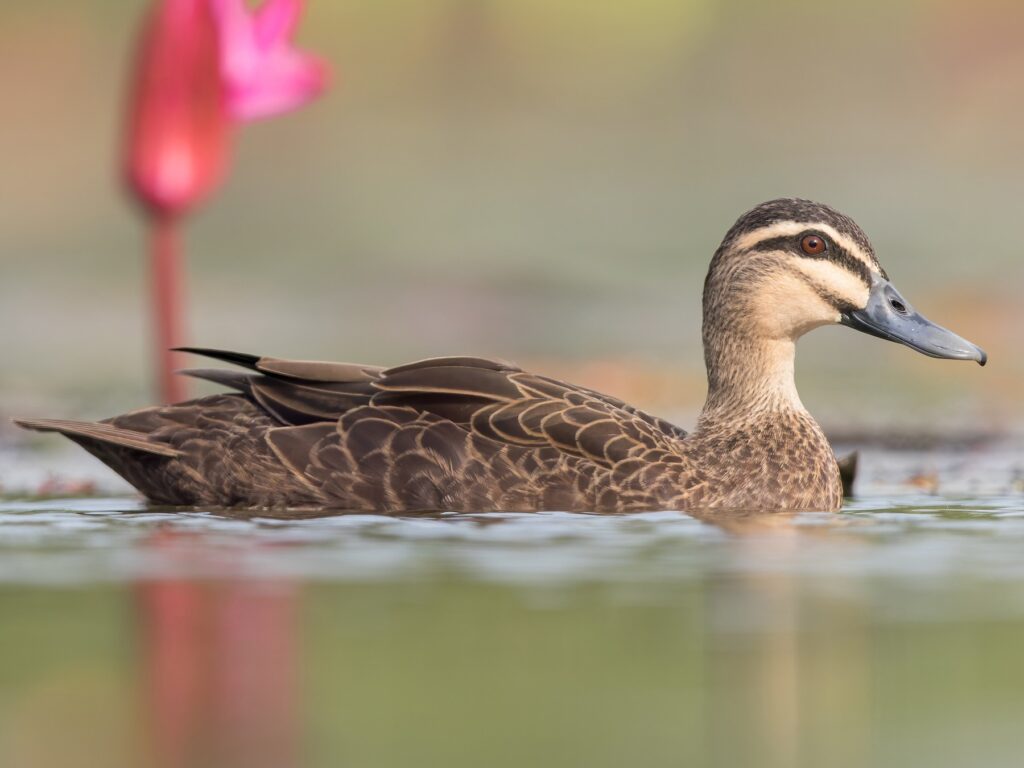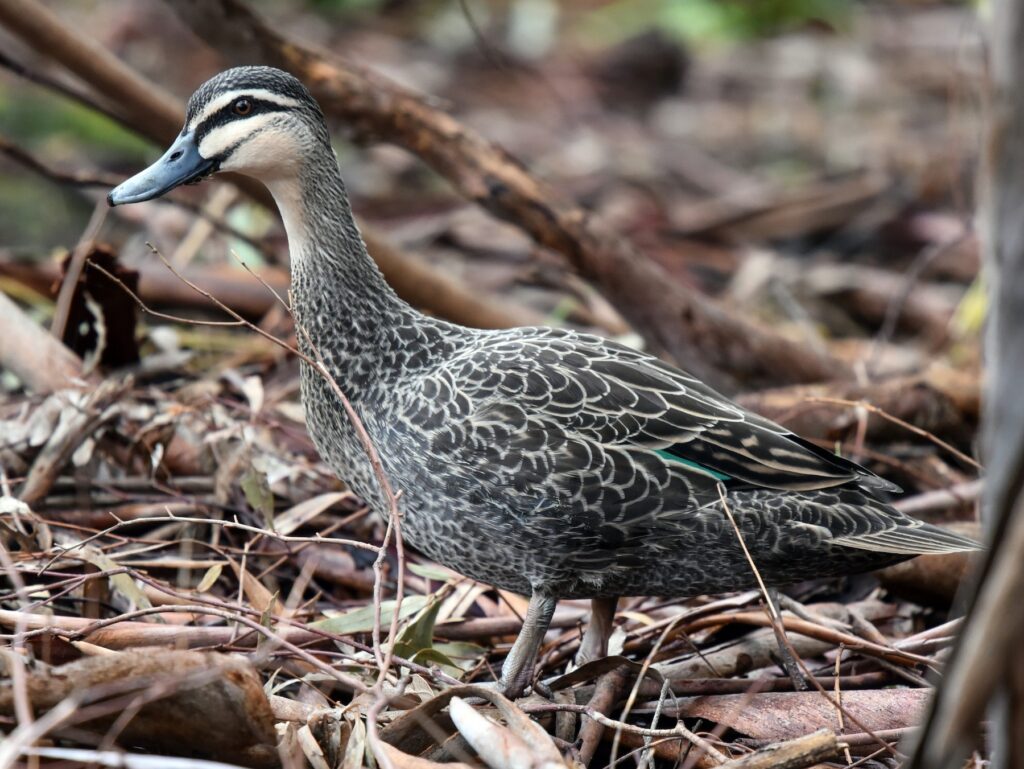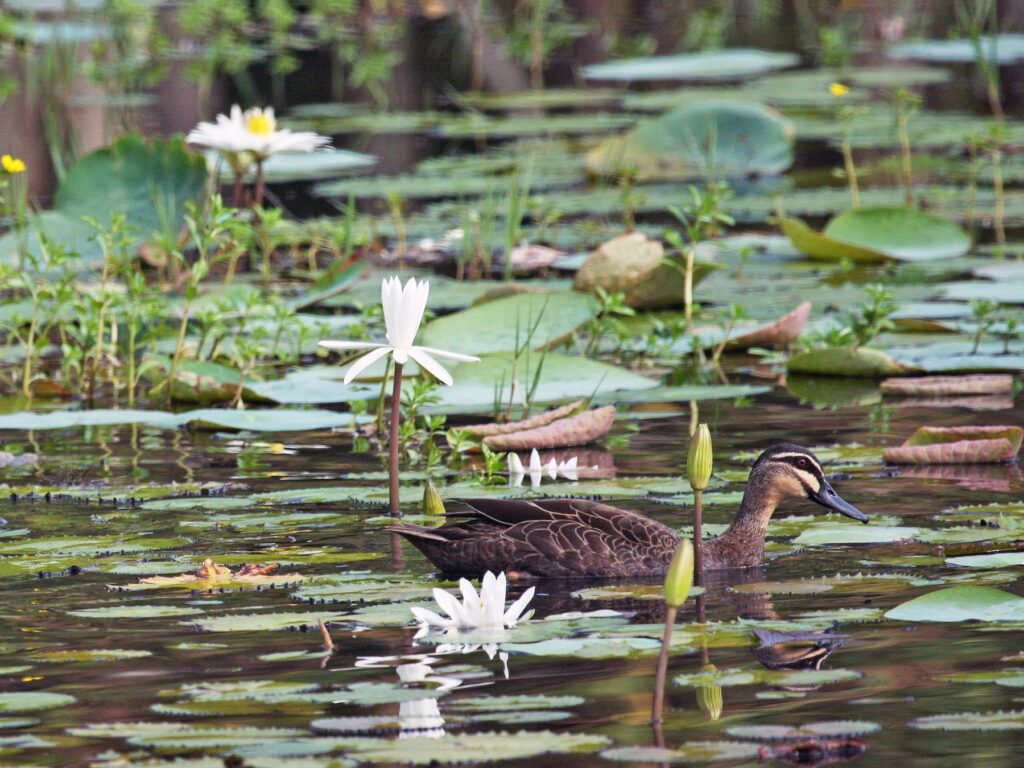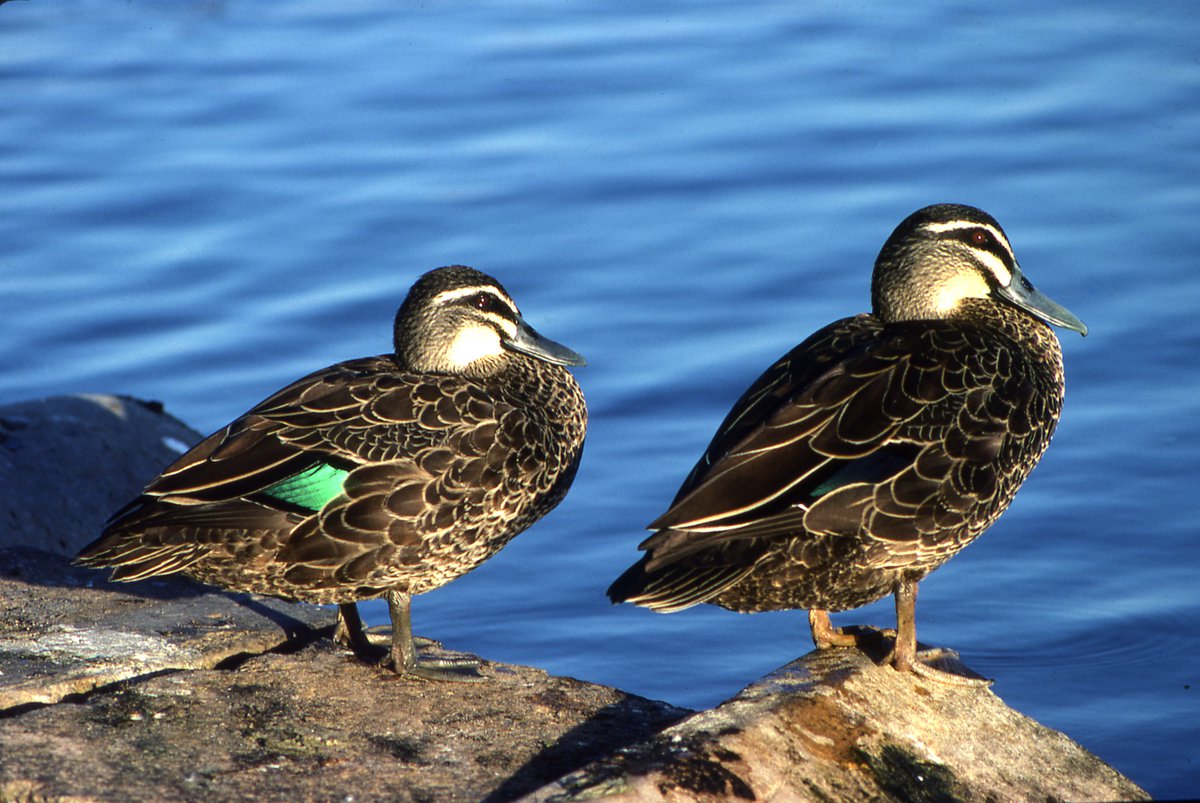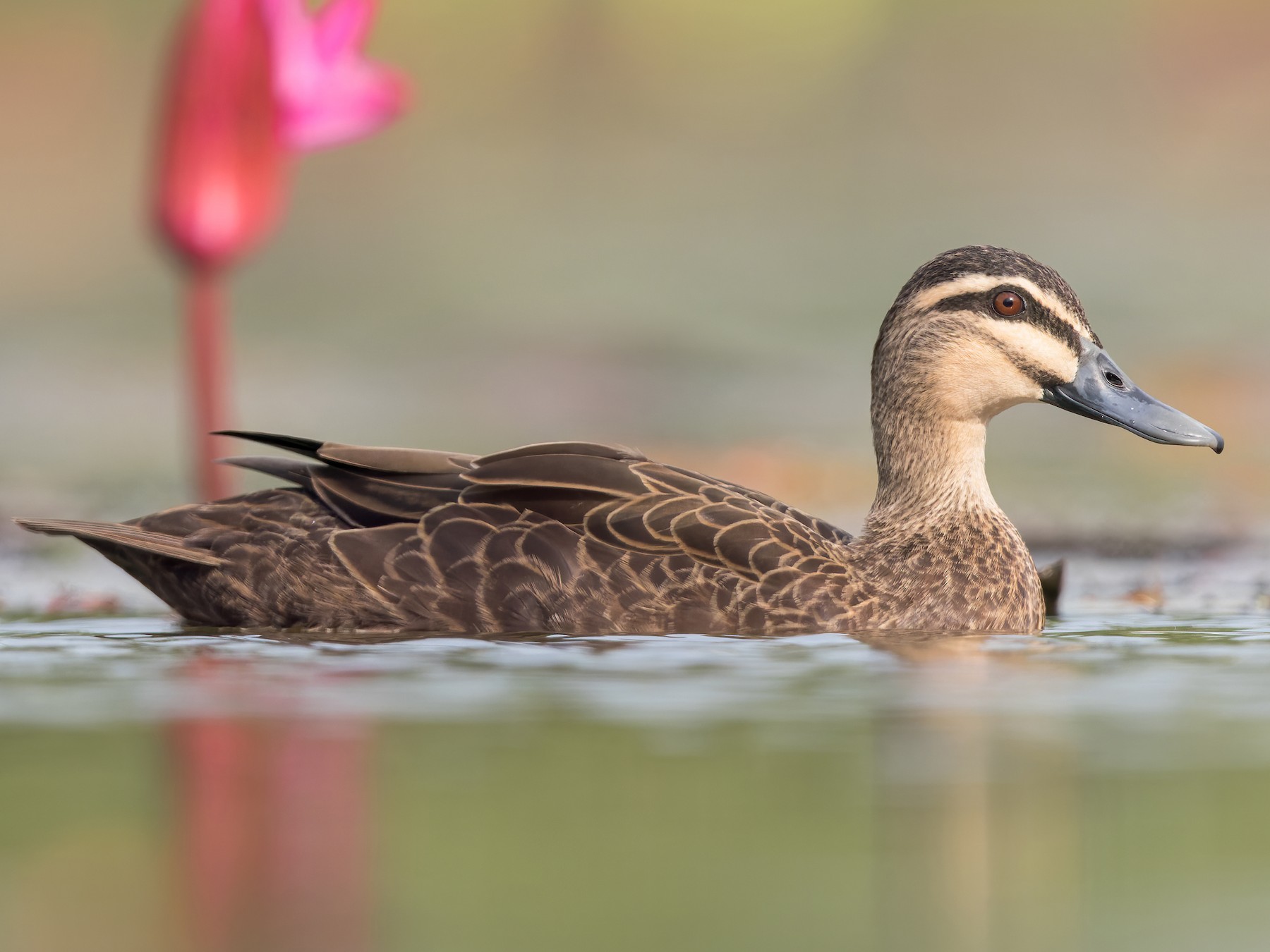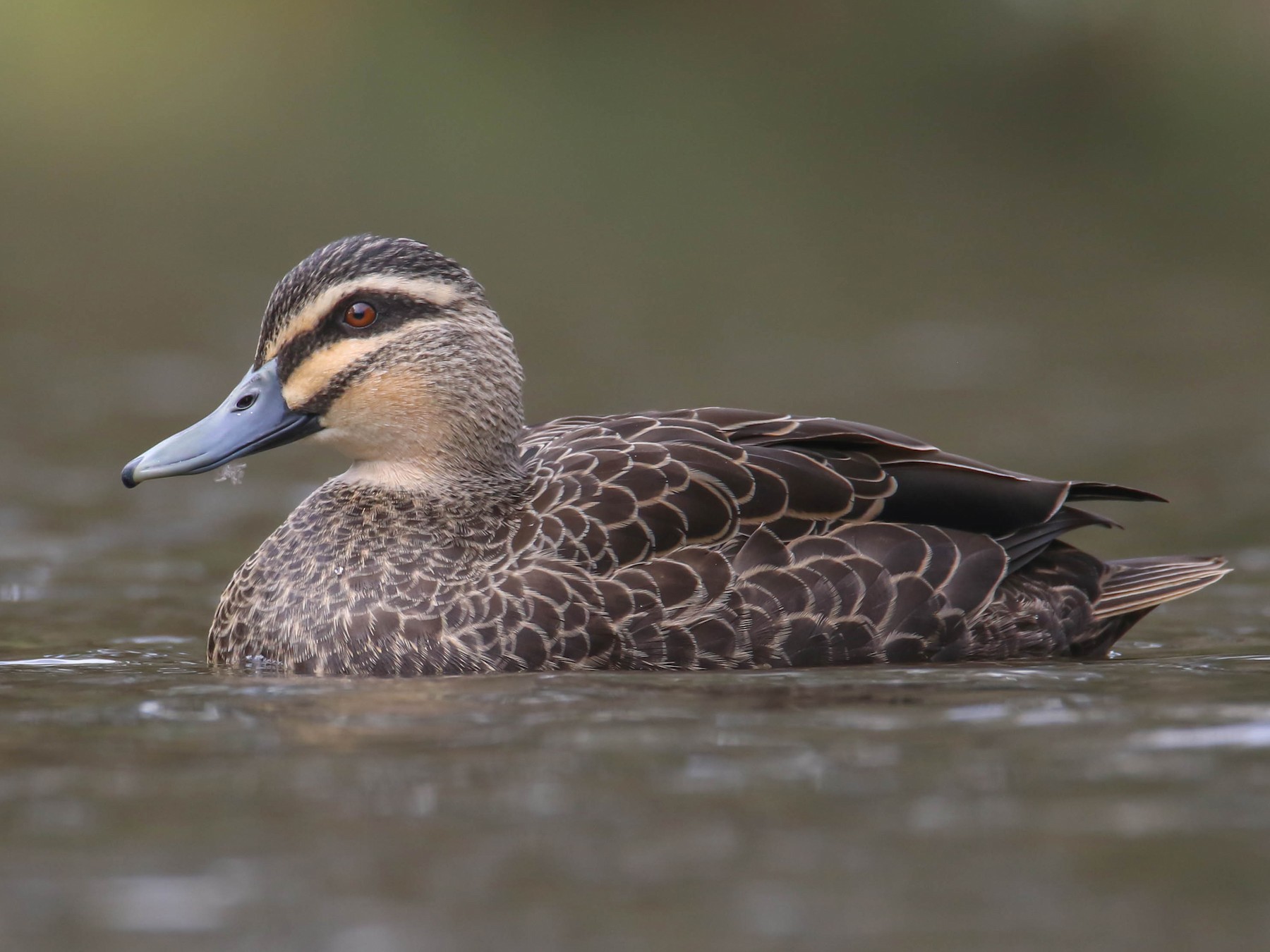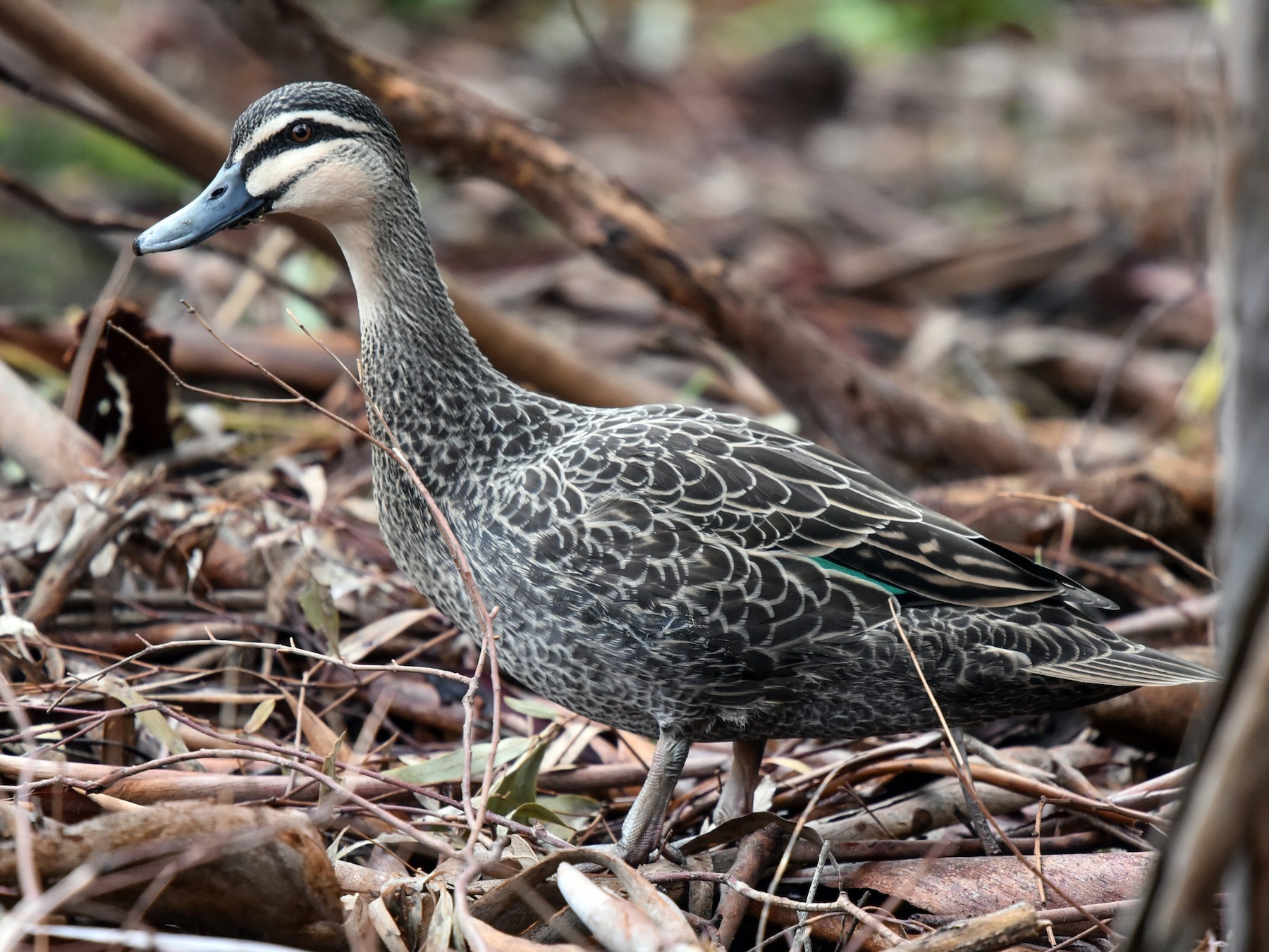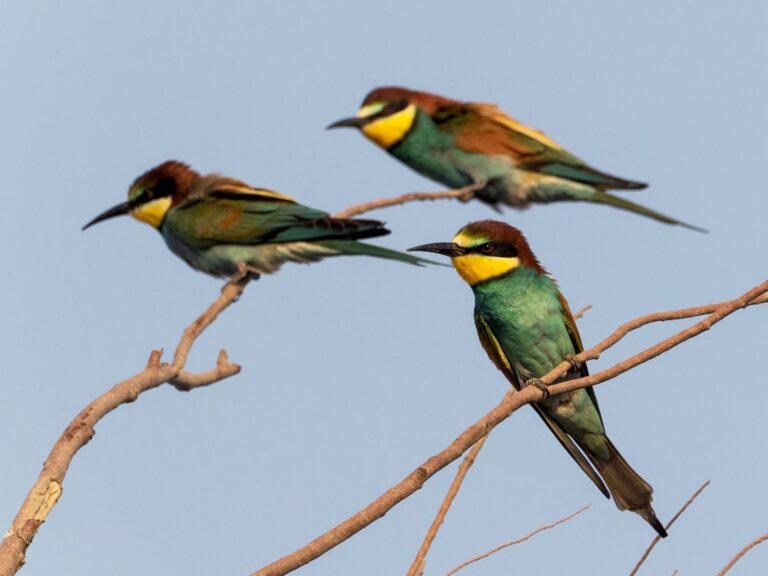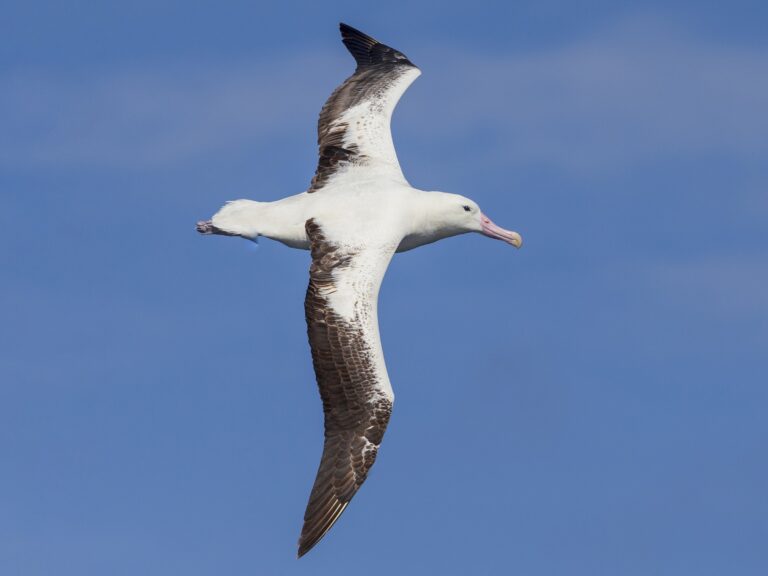Pacific Black Duck: The Resilient Waterbird of Australia’s Wetlands
The Pacific Black Duck, scientifically known as Anas superciliosa, is a fascinating waterfowl native to Australia and New Zealand. This bird is known for its adaptability to various wetland habitats, making it a common sight in lakes, rivers, and coastal areas.
With its distinctive dark plumage and striking facial markings, the Pacific Black Duck is not only visually appealing but also plays an important role in the ecosystem. These ducks are highly social, often found in flocks and known for their diverse diet, which includes aquatic plants, insects, and small fish.
Understanding their behavior and breeding habits reveals much about their survival strategies and interactions with humans. As urban areas expand, the conservation status of the Pacific Black Duck becomes increasingly important, prompting discussions on habitat protection and management efforts.
Key Takeaways
- The Pacific Black Duck is highly adaptable to a range of wetland habitats.
- It has a diverse diet that contributes to its ecological role.
- Conservation efforts are essential for ensuring its survival amid human expansion.
Sign Up for Our Monthly Newsletter
Every month we send out our newsletter about interesting (and sometimes quirky) things happening in the world of birding. Give it a try!
Taxonomy And Classification
The taxonomy and classification of the Pacific Black Duck revolve around its scientific naming, related species, and recognized subspecies. This bird belongs to a specific family and has notable relationships with other ducks through hybridization.
Scientific Name and Naming History
The Pacific Black Duck is scientifically known as Anas superciliosa. The name comes from Latin, where “Anas” means duck and “superciliosa” refers to the distinctive eyebrow-like stripe that runs above its eye.
Initially described in the 18th century, this species has since been classified under the order Anseriformes, which includes ducks, geese, and swans. Over time, its classification has been refined due to new genetic evidence and studies of its morphology. This has led to a better understanding of its place within the dabbling duck group.
Related Species and Hybridisation
The Pacific Black Duck is closely related to several species, including the Mallard (Anas platyrhynchos). Hybridization between these species occurs frequently, especially in Australia, where the presence of Mallards can lead to the mixing of genes.
Such hybridization has resulted in a range of genetic diversity among populations. Urban areas often serve as locations where these hybrids thrive, impacting the genetic integrity of the Pacific Black Duck population.
Research shows that hybridization can complicate conservation efforts due to the blending of distinct characteristics in offspring.
Recognized Subspecies
Anas superciliosa includes several recognized subspecies, primarily distinguished by their geographical locations.
These include the Grey Duck (Anas superciliosa superciliosa) found in New Zealand and the Island Black Duck (Anas superciliosa rogersi) from regions around Australia. Each subspecies exhibits unique traits and adaptations to their respective habitats.
For example, the New Zealand Grey Duck is often considered a separate subspecies, highlighting its distinct characteristics compared to its Pacific counterpart. Understanding these classifications is essential for conservation strategies aimed at preserving each unique lineage.
Physical Description And Identification
The Pacific Black Duck displays distinct traits that are key to recognizing and differentiating it from similar species. Its size, appearance, and distinctive markings contribute to its identification. Here are the main features that help distinguish this duck.
Size and Appearance
The Pacific Black Duck is a medium-sized waterfowl. Adults typically measure between 55 and 65 centimeters in length. Their body is robust, with a relatively long neck and a rounded head.
The coloration is generally dark brown with subtle variations across individuals. Males are usually slightly larger than females and appear more vibrant. Both sexes have a broad body and long wings, providing them with strong flight capabilities.
Distinctive Markings
One of the defining features of the Pacific Black Duck is its green speculum—the colorful patch visible on the wing during flight. This feature is highlighted by a dark crown and a pale underwing, which becomes more noticeable in flight.
The duck’s face is marked with a light brown stripe running from the bill, contrasted by a darker crown. The underparts are lighter, creating a visual balance that adds to its distinctive look.
Plumage Differences Between Male and Female
In terms of plumage, male Pacific Black Ducks exhibit richer coloration than females. Males possess glossy greenish-black heads and more pronounced markings. Females tend to have a more mottled appearance, primarily in shades of brown, helping them blend into their surroundings.
This difference serves as a camouflage strategy, especially during nesting. Both sexes feature flight feathers that are essential for swift movement, but males are typically more vibrant, especially during mating displays.
Comparison with Mallard
While similar to the Mallard, the Pacific Black Duck has key differences. The Mallard, a more common sight, often has a brighter color palette, particularly in males with their iconic green heads.
In contrast, the Pacific Black Duck has a more subdued coloration. The green speculum is present in both, but the Pacific Black Duck’s is often less pronounced. When comparing the two, one can notice that the Pacific Black Duck lacks the striking contrast of the Mallard’s throat and nape.
These differences are essential for accurate identification in the field. For more detailed identification, resources are available, including studies on the identification of American Black Ducks and the ecology of Pacific Black Ducks.
Range And Habitat
The Pacific Black Duck is found in various regions, highlighting its adaptability to different wetland environments. It thrives in areas that provide ample food and safe nesting sites, which include lakes, swamps, and more. Its geographic distribution spans several countries and islands.
Geographic Distribution
The Pacific Black Duck primarily inhabits Australia, New Zealand, and New Guinea. Its range also extends to parts of Indonesia and the southwestern Pacific, including the Caroline Islands and French Polynesia.
This duck species prefers locations close to water sources, where it can hunt for food and find shelter. During migration, they often traverse these regions, making their presence known across diverse habitats.
Preferred Wetland Habitats
Pacific Black Ducks favor wetland habitats like flooded grasslands, lakes, and swamps. They are often seen in environments with abundant aquatic vegetation. These areas provide not only food but also protection from predators.
The presence of lagoons and shallow waters is essential for breeding and feeding. The adaptability of this species to different types of wetlands allows it to thrive in varied climates and conditions.
Occurrence in Islands and Remote Regions
In addition to mainland populations, Pacific Black Ducks are commonly found in island ecosystems. They inhabit remote regions that offer suitable wetland areas.
Their ability to persist in isolated locations makes them a vital part of these environments. The presence of Pacific Black Ducks in islands like those in French Polynesia showcases their resilient nature.
They play an essential role in the local ecosystems, often influencing the health of wetland environments where they reside. For more detailed information on Pacific Black Duck habitats, you can explore studies on habitat use and ecological assessments.
Behavior And Diet
The Pacific Black Duck exhibits unique feeding habits and a varied diet, which are crucial for its survival. This section highlights its feeding behavior, dietary composition, and migration patterns that shape its lifestyle.
Feeding Habits
Pacific Black Ducks are primarily foragers, spending a significant amount of time in shallow waters. They often dabble and tip their bodies to reach for food beneath the surface.
Their feeding technique allows them to access a variety of food sources, including aquatic plants and seeds. Ducks may also graze in fields near water, seeking out invertebrates and roots.
They are known to adapt their foraging strategies based on their environment, which enables them to thrive in various habitats. Feeding is often influenced by food availability and social interactions within flocks.
Diet Composition
The diet of the Pacific Black Duck is diverse. It primarily consists of aquatic plants, seeds, and crustaceans. These ducks are opportunistic feeders, adjusting their diet based on seasonal availability.
Insects are a key part of their diet, providing essential nutrients. They consume aquatic insects, snails, and molluscs to increase protein intake. Ducks also forage on land, looking for seeds and vegetation that can supplement their dietary needs. This varied diet helps maintain their health and energy levels throughout the year.
Migration Patterns
Pacific Black Ducks typically do not migrate long distances like other duck species. They have a tendency to move locally in search of food, often changing locations based on seasonal changes. In some areas, they may migrate short distances in response to environmental factors.
During migration, they focus on finding habitats rich in food resources. These movements help them avoid harsh weather conditions and locate suitable foraging areas. Understanding their migration can provide insights into their adaptability and survival strategies.
Various regions support their need for food throughout the year, enabling them to thrive. For more information, studies have shown that continuous behavioral monitoring can shed light on their feeding behaviors during critical times like wing moult.
Breeding And Life Cycle
The breeding and life cycle of the Pacific Black Duck involves specific timing, elaborate courtship displays, and careful nesting behaviors. Understanding these aspects is crucial for appreciating how these ducks reproduce and maintain their populations.
Breeding Season and Timing
Pacific Black Ducks typically breed from late winter to early summer, depending on their geographical location. The exact timing can vary with environmental conditions, especially food availability and water levels.
During these months, males engage in courtship behaviors to attract females. Breeding starts when females select a mate based on these displays.
Courtship Displays
Courtship displays among Pacific Black Ducks are elaborate and essential for mate selection. Males often perform head bobbing, preening, and vocalizations to showcase their health and attractiveness.
These displays help females choose the best mate for breeding. Such behaviors can last for several weeks, creating strong pair bonds before nesting begins.
Nesting and Eggs
Nesting typically occurs near water bodies, using grasses, reeds, and other vegetation to create a safe space. Females lay between 8 to 12 glossy white eggs, which they incubate for about 28 days.
Nests are often hidden to protect against predators. After hatching, ducklings are precocial, meaning they can walk and swim shortly after birth, which is crucial for their survival in the wild.
Conservation Status And Human Interaction
The conservation status of the Pacific Black Duck is influenced by various factors, including population trends, threats they face, and their significance in local cultures.
Population Trends
The Pacific Black Duck population has experienced fluctuations due to habitat loss and human intervention. Recent studies indicate that certain areas show a decline in numbers, particularly where urbanization impacts wetlands.
In places like Aunu’u, American Samoa, specific assessments have been conducted to understand these trends better. Conservationists are focusing on monitoring populations to inform future actions.
Threats and Conservation Efforts
Pacific Black Ducks face threats from habitat degradation, urban development, and hybridization with Mallards. Urban areas disrupt their natural habitats, leading to reduced nesting sites.
Conservation efforts focus on habitat restoration and protection. Programs aim to raise awareness and implement management strategies. Organizations work to limit urban sprawl near wetland areas, allowing more space for these ducks to thrive. Additionally, monitoring hybridization helps maintain the genetic integrity of the species.
Significance in Local Cultures
In many Pacific regions, the Pacific Black Duck holds cultural significance. Known in Māori as “pārera,” these ducks are valued for their contributions to local ecosystems. They are often featured in local folklore and traditions.
Communities rely on ducks for food and as symbols of the natural heritage in the region. Recognizing their importance can promote conservation efforts and strengthen community ties to local wildlife. Respecting cultural aspects of the Pacific Black Duck can foster better protection initiatives. For further insight on these ducks, explore Pacific Black Duck conservation.
Frequently Asked Questions
This section answers common questions about the Pacific Black Duck, covering its features, lifespan, care, and distinguishing characteristics compared to similar species. Each answer provides specific information relevant to those interested in this duck species.
What are the identifying features of the Pacific black duck?
The Pacific Black Duck has a distinctive dark brown body with lighter mottled patterns. They possess a unique stripe, known as a speculum, on their wings which is a vibrant shade of blue bordered by black. Their bill is somewhat flat and varies in color from yellowish to greenish.
How long do Pacific black ducks typically live?
In the wild, Pacific Black Ducks can live around 5 to 10 years. Factors such as predation, habitat loss, and food availability can impact their lifespan. Ducks in protected environments or captive settings may live longer due to reduced threats.
What is the significance of the speculum in Pacific black ducks?
The speculum is an important feature for identification. It helps in recognizing the species during flight and mating displays. This blue-colored wing patch is a key characteristic that hunters and birdwatchers often look for to distinguish the Pacific Black Duck.
How to differentiate between a Pacific black duck and a Mallard?
While both ducks share a similar shape and some coloring, Pacific Black Ducks generally have a darker overall appearance. Their mottled brown feathers are less colorful than the Mallard’s vibrant green head in males. Additionally, the speculum on a Pacific Black Duck is often a brighter blue compared to that of a Mallard.
What is involved in the care of Pacific black ducklings?
Caring for Pacific Black Ducklings requires ensuring a safe and clean environment. They need access to fresh water for both drinking and swimming. A balanced diet that includes duck pellets, insects, and greens is essential for their growth and health.
How does the size of Pacific black ducks compare to similar species?
Pacific Black Ducks are medium-sized. They typically measure around 55 to 65 centimeters in length. Compared to Mallards, they are similar in size. Other dabbling ducks, like the Australasia region’s Teal species, may be smaller in comparison.

